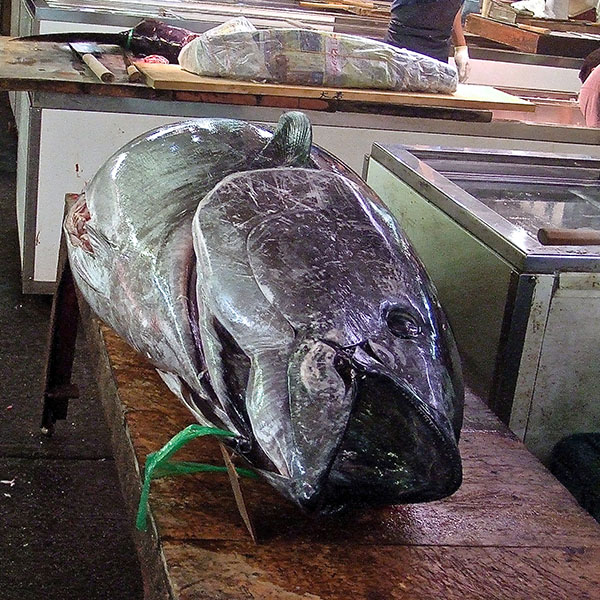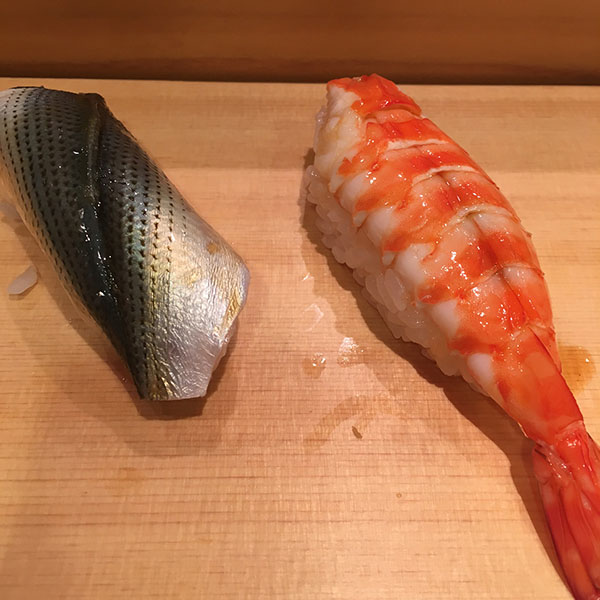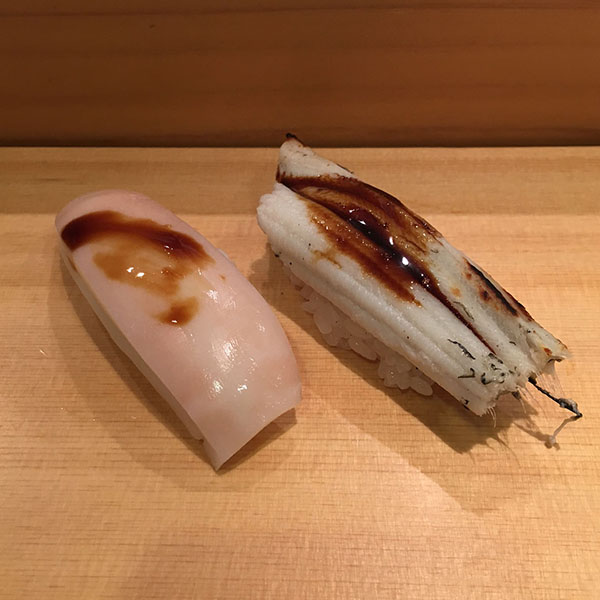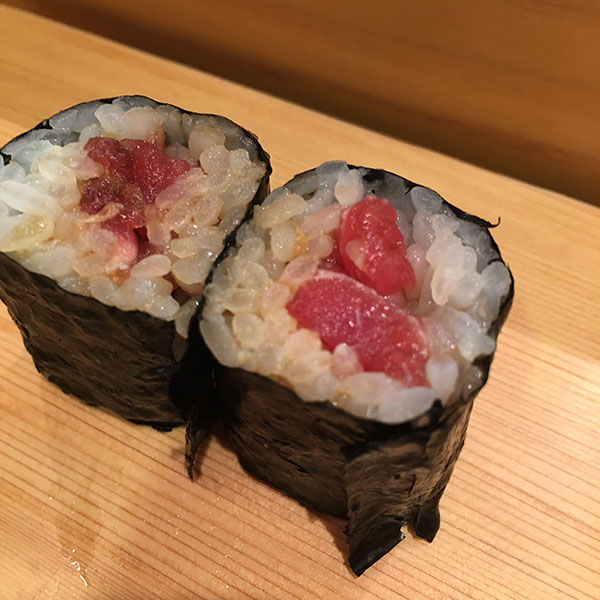Where to eat Sushi and What to look forward to
Edo-mae Sushi | 江戸前 鮨
There is a word “Edo-mae” which translates to “the way of Edo”. The central part of Tokyo, downtown Tokyo, was called Edo before the city was named Tokyo in 1868. Edo was the center of Japan back then much like Paris in Europe where things were happening.
Each region in Japan has its own way of preparing food, very similar to the idea of “Terroir” in French gastronomy, depending on the climate, the geographical characteristics and the culture.
The term is often used not only to specify the style in cuisine but also to emphasize the pride of artisan in mastering every single process possible, throughly.
The following is my attempt to describe what “Edo-mae Sushi” is.

What to look forward to in Sushi
The freshness of fish is often the only element in Sushi to be talked about.
The most of the fish in Japan goes through Tsukiji Fish Market. Most Sushi places including many places outside of Japan buy fish from Tsukiji in the morning and serve them to their customers the same day.
There are skills and techniques involved to keep the fish fresh and firm, and less expensive places might use frozen fish-Nonetheless, you can’t really server not-so-fresh fish because the risk of the food poisoning is not something worth taking a risk, when you have a restaurant in Japan.
Many of the Sushi chefs often states that they are only finishing up the last 20% of their work in front of the customers. 80% of their work is in preparation.
I personally think there’s no such thing as bad tasting Sushi. It’s hard to mess up serving a slice of fresh fish on rice when you are a professional. I doubt that it’s even possible to get disappointed at any Sushi place if your expectation is based on fresh fish on good rice. There are places you can dine for ¥3,000~/person, however, Sushi in Japan is considered much like treat. If you want to experience something that is hard to find outside of Japan, you should expect to spend ¥15,000/person or more.
The chefs of “Edo-mae Sushi” are aiming for a much higher expectation.



Ingredients
As in any cuisine, acquiring high quality ingredients takes close relationship with their venders. Some chefs visit the rice field every year to check the condition of the crops and the field. Some chefs have their venders hand pick grains to meet the standard.
Many of the fish including Tuna are preferred fatty, but there are types of fish that are preferred lean. A chef has to earn respects from the brokers who actually auction off the fish at the market in order to receive the highest quality fish because the brokers with high skills to tell the quality and the condition of the fish without cutting them open are only a selected few.
Preparation
Some chefs calculate backward from the time of the reservation to decide when to cook rice and season them, so the temperature of the rice is closed to human body temperature when served.
Everything that goes onto the rice is prepared with careful execution to bring the flavor and the texture to the fullest. They cure with salt and/or vinegar, marinate, broil, grill, boil and sometimes even stew the ingredients.
People often talk about the “Freshness” of the fish being the most important factor in Sushi making, however, fish can be cured for days in the process.
Cut
There is a term “kakushi-bouchou”. The direct translation is “Hidden Knife (Cut)”, and the term is used in contrast to “kazari-bouchou” or “Decorative Cut”.
While “kazari-bouchou” such as making cuts on cucumber to make it look like a leaf is strictly for a decorative purpose, “kakushi-bouchou” change the experience when you actually put the food in your mouth. You might have seen tens of hairline cut on a slice of squid. That is to make squid less chewy.
Nigiri
What they do behind the counter is called “Nigiri (noun)” or “Nigiru (verb)”. The direct translation is to grip. Each chef has their own style or philosophy when it comes to this process. Many say that the act of “Nigiri” is almost like shaping mist in their hand. They don’t use force to shape the rice because they rather make it airy.
While many of the fish are seasoned in the preparation process, chefs will brush their special sauce on the ones that are not. That means, you don’t need to dip your sushi in soy sauce at “Edo-mae Sushi” places.
Season
Fish is seasonal. Some fish taste better in winter, and others in the summer. There are certain kind of fish that they can only catch in particular season as well. That is why it is always recommended to order “Omakase”.



Right: Boiled prawn.


Right: tuna seared, marinated and shaved off the cooked part.

Followings are some of the many places you can experience “Edo-mae Sushi”.
*The list contains places that I have not actually been for the sake of covering different type of places.
Miyako 弁天山 美家古 寿司
- dinner ¥10,000~¥15,000/person
- Asakusa (Old Town Tokyo)
- http://www.bentenyama-miyakosushi.com/en/
- opened in 1866. they have been passing down the tradition for over 150 years.
Teruya 一番町てる也
- dinner ¥20,000~¥30,000/person
- Central Tokyo
- https://www.timeout.com/tokyo/restaurants/ichibancho-teruya
- *according to this article, the chef speaks English
Hayakawa 鮨 早川
- dinner ¥20,000~¥30,000/person
- Ebisu Area
- https://www.tripadvisor.com/Restaurant_Review-g1066456-d7493191-Reviews-Sushi_Hayakawa-Shibuya_Tokyo_Tokyo_Prefecture_Kanto.html
- *known for their modern take on traditional Sushi
While “Jiro” has become almost impossible to get reservations, you can have similar experience at the following places. They follow Jiro’s philosophy.
Jiro Roppongi すきやばし次郎 六本木
- dinner ¥25,000~¥35,000/person
- Roppongi
- https://www.tripadvisor.com/Restaurant_Review-g1066451-d1177368-Reviews-Sukiyabashi_Jiro_Roppongi_Hills-Minato_Tokyo_Tokyo_Prefecture_Kanto.html
Matsuda 鮨 ます田
- dinner ¥25,000~¥35,000/person
- Harajuku / Omote Sando Area
- http://gm.gnavi.co.jp/shop/0117033301/
harutaka 青空
- dinner ¥25,000~¥35,000/person
- Ginza
- https://www.tripadvisor.com/Restaurant_Review-g1066444-d7287203-Reviews-Harutaka-Chuo_Tokyo_Tokyo_Prefecture_Kanto.html
- *known to be a rare breed among Jiro’s apprentice. While Jiro almost despise the culture of Sake accompanying Sushi, thus minimizing appetizer, Chef Takahashi is passionate about appetizers.






